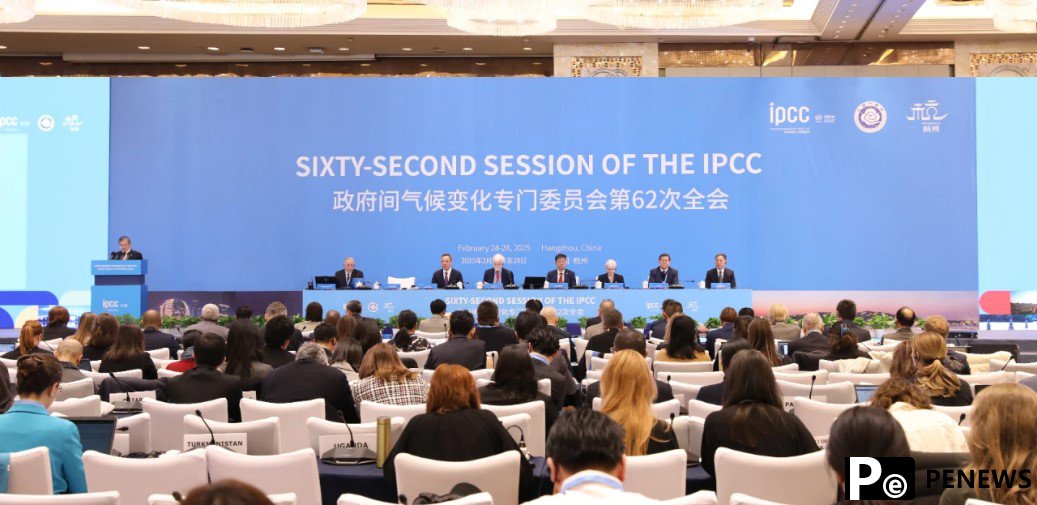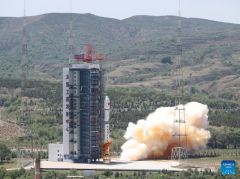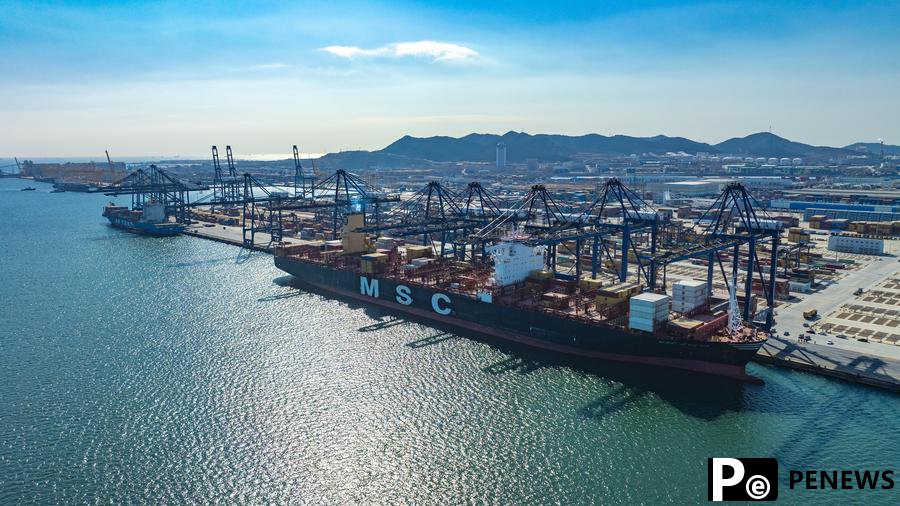Home>>
China's meteorological early warning solutions benefit the worldBy Li Hongmei (People's Daily) 15:36, March 13, 2025
In recent years, China's meteorological authorities have actively forged a distinctive blueprint in weather crisis management through operational refinement. What began as localized disaster preparedness efforts has evolved into a sophisticated national architecture. At its core lies an early warning paradigm balancing government coordination, predictive analytics, and grassroots mobilization, a model now gaining international attention as climate volatility intensifies.
Today, China's early warning solutions have begun expanding globally through the establishment of operational platforms, provision of technical support, and implementation of personnel training programs, fostering international cooperation to jointly tackle the challenges of climate change.

The 62nd session of the Intergovernmental Panel on Climate Change is held in Hangzhou, east China's Zhejiang province from Feb. 24 to March 1. (Photo/Tang Kai)
The system's global relevance emerges through its operational DNA: modular technical platforms adaptable to developing nations, knowledge-transfer programs cultivating meteorological expertise, and multilateral partnerships addressing shared climate threats. Yet its most compelling innovation remains the progressive meteorological forecasting and early warning service.
Developed through analyzing thousands of weather emergencies, this approach layers forecasts like meteorological Russian nesting dolls - broad probabilistic models gradually sharpening into neighborhood-specific alerts as storms approach. Each update tightens the geographic scope while escalating response protocols.
Operational rhythms shift palpably when danger looms. Emergency managers receive notifications through multiple channels - phone calls, WeChat messages, and other channels. This graduated urgency system now blankets all provincial-level regions in China.
China's achievements in meteorological early warning stand as a testament to its relentless pursuit of scientific and technological excellence.
The nation has constructed the world's most extensive integrated meteorological observation network, encompassing nine Fengyun meteorological satellites, 546 weather radars, and over 70,000 ground observation stations—a sprawling infrastructure that captures an unparalleled breadth of atmospheric data.
Three AI-powered forecasting models - "Fengqing," "Fenglei," and "Fengshun"- have reached international advanced levels in some aspects, harnessing computational power to predict weather phenomena with remarkable precision.
China's intelligent digital grid forecasting system boasts a nationwide spatial resolution of five kilometers, achieving a 93 percent accuracy rate for heavy rainfall warnings and providing a critical 43-minute lead time for severe convective weather alerts. Notably, the 24-hour typhoon track forecast maintains an average error margin of 62 kilometers, placing it among the world's most accurate.
Furthermore, China has established a warning information release system of national emergency that integrates 82 types of alerts across 16 industries. This streamlined process ensures that critical warnings are disseminated to government officials, relevant departments, and industry stakeholders within a minute, enhancing rapid response and coordination.
Ko Barrett, deputy secretary-general of the World Meteorological Organization (WMO), has lauded China's efforts in developing and building capacity for early warning systems, recognizing their significance as a model for global practices.
China's meteorological early warning systems and standards have garnered international recognition, now being adopted across multiple countries. The China Meteorological Administration (CMA) has played a pivotal role in establishing a warning information dissemination system in Laos and launching an ASEAN data service platform dedicated to early warning operations. Collaborating with the Pakistan Meteorological Department, China has developed a bespoke cloud-based early warning system that harnesses AI and other cutting-edge technologies for advanced weather forecasting.

A Chinese expert and a local meteorologist jointly analyze the development trends of weather systems at an observation site of the Solomon Islands Meteorological Services. (Photo/Yang Guojie)
Similar projects are unfolding with the Ethiopian meteorological authority and the Solomon Islands, where China is aiding in the development of cloud-based early warning systems and build platforms tailored to meet the needs of the developing world. Additionally, China leads a multi-hazard early warning system development initiative for Asia launched by the WMO.






